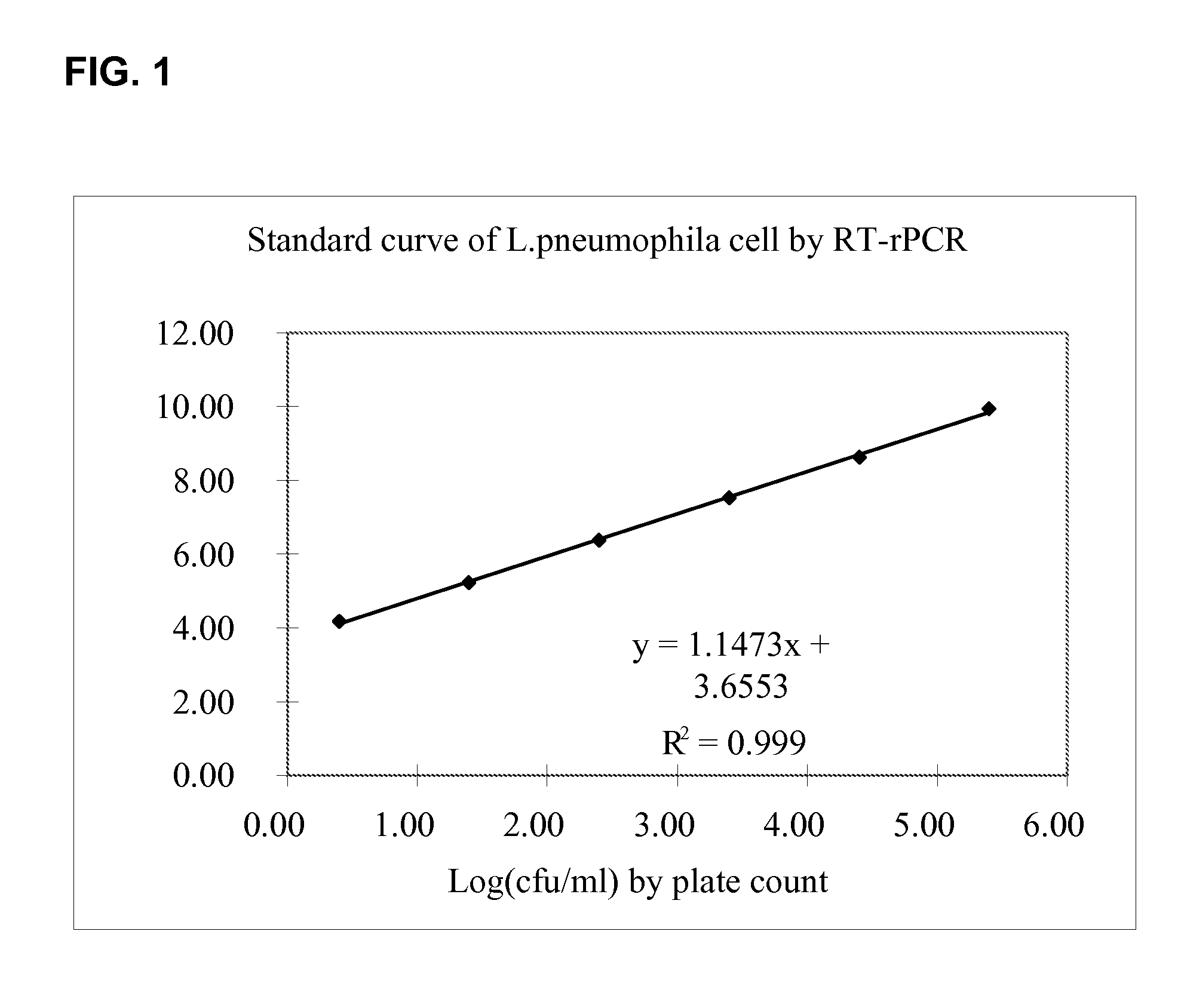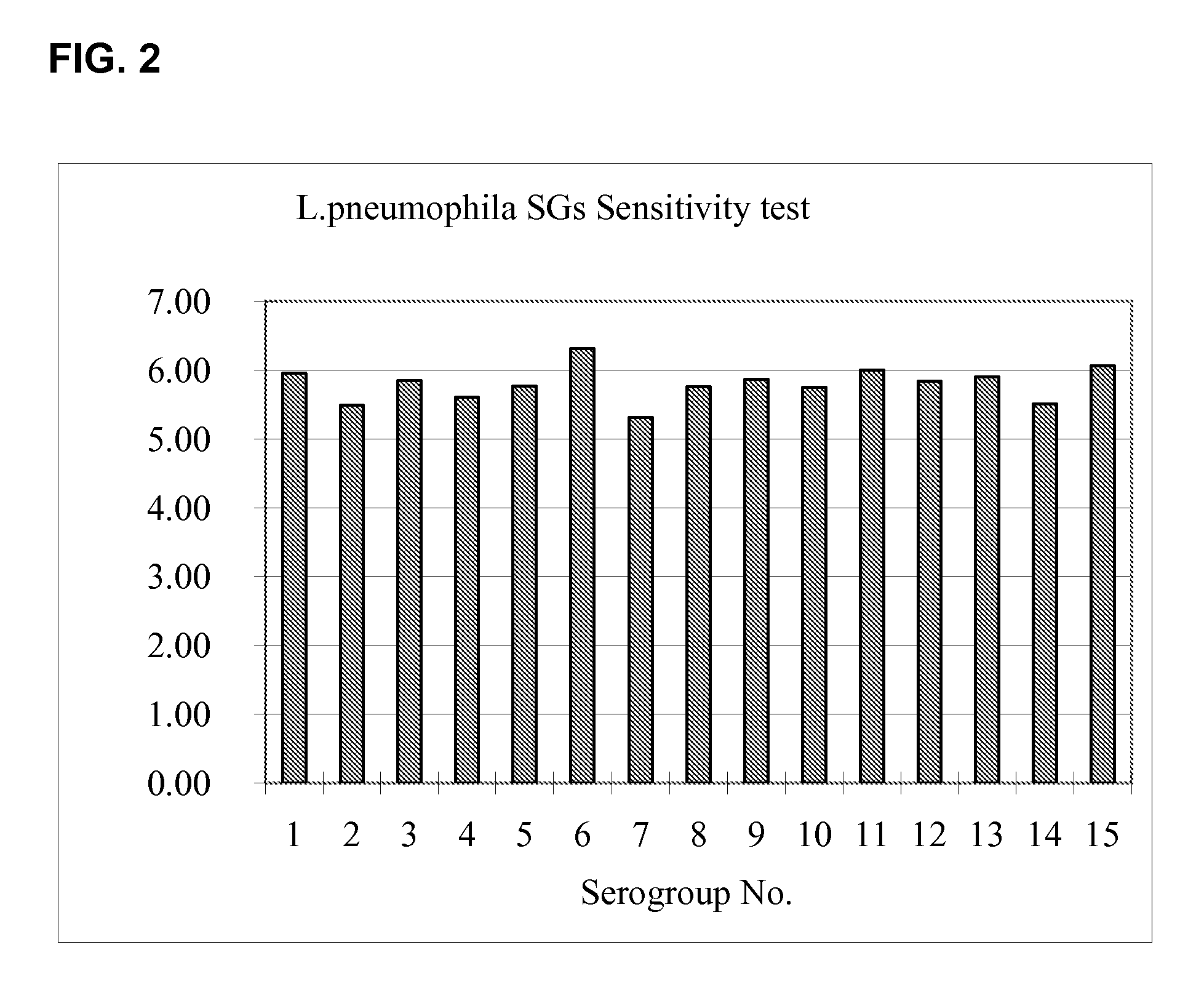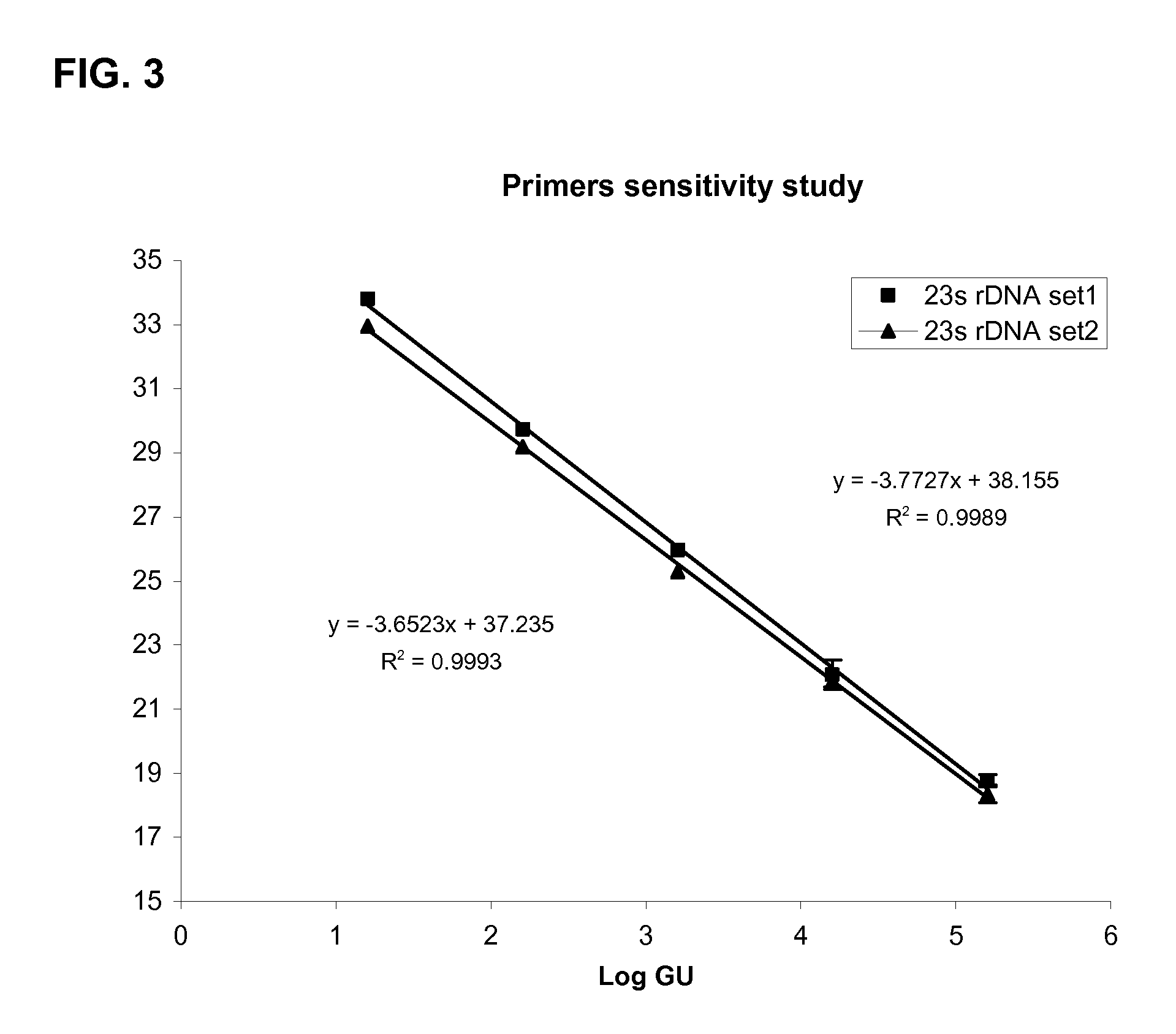Compositions And Methods For The Rapid Detection Of Legionella pneumophila
a technology of legionella pneumophila and composition, applied in the field of composition and methods for the detection of legionella pneumophila, can solve problems such as false positives, and achieve the effect of more accurate and sensitiv
- Summary
- Abstract
- Description
- Claims
- Application Information
AI Technical Summary
Benefits of technology
Problems solved by technology
Method used
Image
Examples
example 1
Detection of L. pneumophila 23S rRNA Target Sequence
[0086]Capture probes, amplification primers and detection probes described herein were tested for the amplification and detection of L. pneumophila target sequence as follows:[0087]1) A series of test samples were prepared with a concentration of Legionella pneumophila cells from 100 to 10−9 in Page's saline buffer; samples were plated in cell culture for counting.[0088]2) 9 ml lysis buffer was then added to 1 ml of each test sample of Legionella pneumophila cells and incubated overnight.[0089]3) Lysates for each test sample were then filtered through PES 0.22 um˜0.45 um membrane.[0090]4) 500 ul of filtered cell lysate from step 3 was mixed in an annealing mixture with a L. pneumophila capture probe consisting of 5′-biotin-(A)14-TTCCCATCGACTACGCTCTT (SEQ ID NO:1)-3′, as well as an IC template and IC capture probe consisting of 5′-biotin-(A)14-GCTTACCAGTCCGTCGAGAA (SEQ ID NO: 21)-3′ in SSC buffer. The mixture was heated at 65° C. fo...
example 2
Specificity Against Non-pneumophila Legionella species
[0096]The amplification primer and probe sets described herein were tested against 43 microorganism species that are either found in the same ecological region or phylogenetically close to Legionella for the detection of Legionella pneumophila. Set 1 consisted of forward and reverse amplification primers having SEQ ID NO: 12 or SEQ ID NO: 13 and a corresponding detection probe having SEQ ID NO: 14. Set 2 consisted of forward and reverse amplification primers having SEQ ID NO: 1 and SEQ ID NO: 7 and a corresponding detection probe having SEQ ID NO: 9 (Set 2).
[0097]RNA was extracted for each of the 43 non-pneumophila Legionella species as well as other non-legionella microorganisms listed in Table 4 using a Qiagen™ kit.
[0098]Each of the 43 species were then tested using RT-rPCR on RNA extracts at a concentration of 10̂7 copies / reaction with the same concentration of L. pneumophila serogroup 1 tested as a positive control. The detec...
example 3
Sensitivity Against Different L. Pneumophila Serogroups
[0101]Amplification primers having sequences SEQ ID NO:1 and SEQ ID NO:7 and a detection probe having sequence SEQ ID NO:8 were tested on L. pneumophila serogroups 1 to 15 using the RT-rPCR method described herein. The ATCC strains that correspond to each serogroup are listed in Table 6.
TABLE 6ATCC strains corresponding to L. pneumophila serogroups 1 to 15(See Brenner et al. [32] and Brenner et al. [33]).ATCCSerogroupOrganismDesignationsNumber1Legionella pneumophilaPhiladelphia-133152subsp. pneumophilaBrenner et al.2Legionella pneumophilaTogus-1 [NCTC 11230]33154subsp. pneumophilaBrenner et al.3Legionella pneumophilaBloomington-233155subsp. pneumophilaBrenner et al.4Legionella pneumophilaLos Angeles-133156subsp. fraseri Brenner etal.5Legionella pneumophilaDallas 1E33216subsp. fraseri Brenner etal.6Legionella pneumophilaChicago 233215subsp. pneumophilaBrenner et al.7Legionella pneumophilaChicago 833823Brenner et al.[NCTC 11984]8L...
PUM
| Property | Measurement | Unit |
|---|---|---|
| Fraction | aaaaa | aaaaa |
| Fraction | aaaaa | aaaaa |
| Fraction | aaaaa | aaaaa |
Abstract
Description
Claims
Application Information
 Login to View More
Login to View More - R&D
- Intellectual Property
- Life Sciences
- Materials
- Tech Scout
- Unparalleled Data Quality
- Higher Quality Content
- 60% Fewer Hallucinations
Browse by: Latest US Patents, China's latest patents, Technical Efficacy Thesaurus, Application Domain, Technology Topic, Popular Technical Reports.
© 2025 PatSnap. All rights reserved.Legal|Privacy policy|Modern Slavery Act Transparency Statement|Sitemap|About US| Contact US: help@patsnap.com



